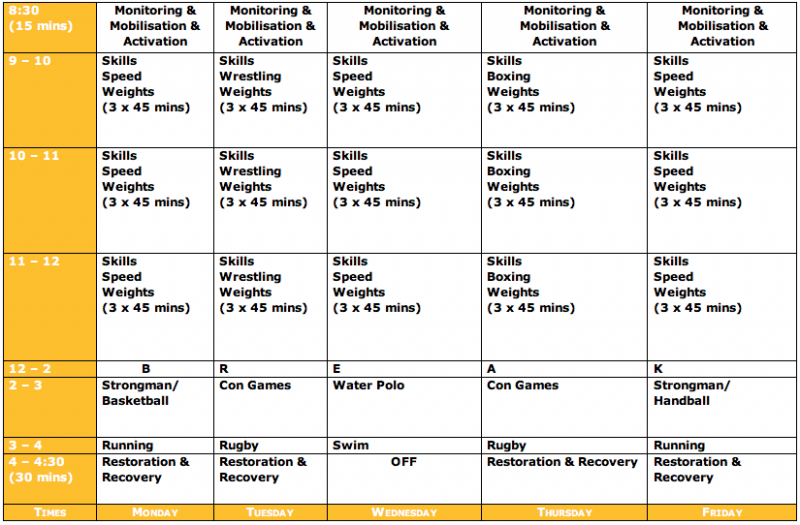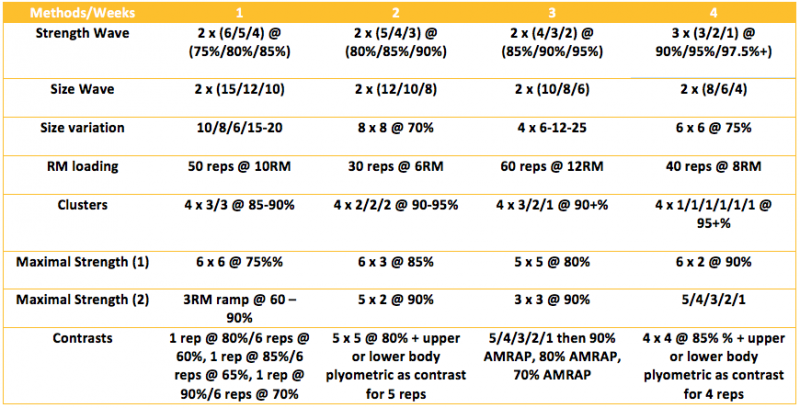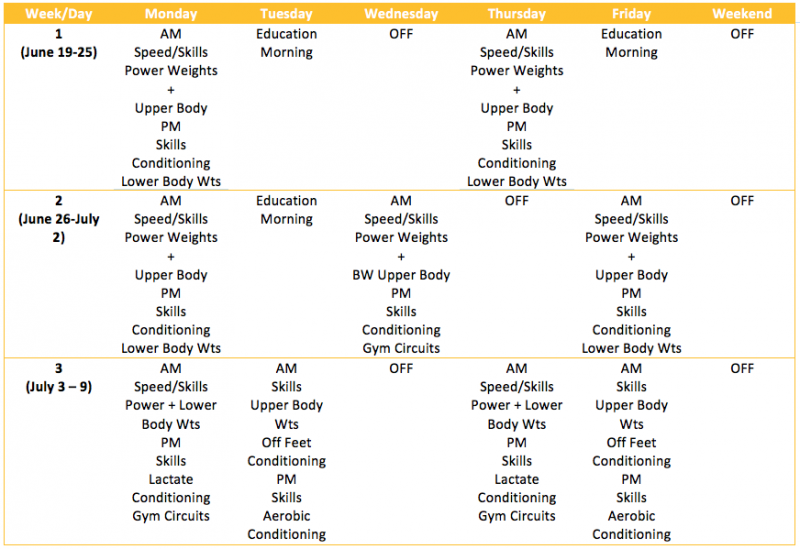
In a previous article here at elitefts, I discussed an approach to programming at universities in the United States. In this article, I want to delve more deeply into the development of this approach and how you can use it to individualize training in a team setting in which you have a large number of athletes from a diverse background of training environments.
Individualization of training in team sports, to me, is the holy grail of the strength and conditioning industry. Many programs say they do it, but in reality, it is not done well around our industry, my own program's included. That is why I borrowed the Quadrant Management System from business and redeveloped it to meet my requirements for programming in team sports.
The system moves from an autocratic dictatorship to a laissez faire approach over a period of time as each athlete proves that they are ready to take on more responsibility for their own development in discussion with the strength and conditioning coach.
RELATED: The Four Year College Strength Program: An Alternative Management Perspective
In the first instance, a player has no input into the training program. Let’s call this "degrees of freedom." This is a term borrowed from statistics, which Wikipedia explains as: "the number of degrees of freedom is the number of values in the final calculation of a statistic that are free to vary."
The development of a training program has many components, and each of these components is referred to as "degrees of freedom" in my model. So in the first exposure to the program, the player has zero degrees of freedom, which equates to no input. They are assigned the exercises, the method to use, and the number of sessions to train each week. They simply follow the training plan placed on the board each week. So for example, consider the following excerpt:
- Power Clean: 6x3 with 85%
- Box Squat: 4x6 with 70%
- Romanian Deadlift: 4x6 with 70%
- Walking Lunge: 2x12
The next phase of a player’s development has them taking on the responsibility of selecting the exercises, in discussion with the strength and conditioning coach, and looking back over training logs to ascertain which selection of movements have worked best over time. The final determination is with the player, so in effect, he now has earned a stripe with his one degree of freedom for the development of his individualized program. With this in place, the player selects from categories for each of the previous example's exercise plan. The player has a choice from the following:
Peak Power
- Power Clean
- Hang Clean
- High Pull
- Power Snatch
- Jump Squats
Maximal Strength/Lower Body Push
- Back Squat
- Front Squat
- Trap Bar Deadlift
- Box Squat
- Deadlift
Glute and Hamstring/Lower Body Pull
- RDL
- Glute Ham Raise
- Reverse Hyper
- Hip Thrust
- Good Morning
Unilateral Lower Body
- Walking Lunge
- Reverse/Forward Lunge Combo
- Bosch Squat
- Step-Up
- Sprinter’s Squat
So the program selected looks like this for the next four to six weeks:
- Jump Squats: 6x3 with 85%
- Trap Bar Deadlift: 4x6 with 70%
- Hip Thrust: 4x6 with 70%
- Sprinter’s Squat: 2x12
The third area for consideration once a player has earned his second stripe is the methods employed in the program with the exercises already selected. There are no hard and fast rules as to when a player progresses. It is dependent on whether they have come through an academy system, from another program with excellent strength and conditioning staff, or you have been with them yourself for a number of years (often not a luxury we have in our business). I have written previously about the variety of methods you can employ to develop strength and power, but for this example, I will limit this to a few options for the example player to select from. These are clusters, supersets (push and pull), and wave loading.
To develop the individual program further, the player now has this program in detail:
- Jump Squats, Wave Loading: 2x3/2/1 with 85%, 90%, 95%
- Trap Bar Deadlift, Cluster Sets: 4x2/2/2 with 90%, 20 Seconds Rest
- Superset: Hip Thrust 4x6, 70% superset with Sprinter’s Squat 4x6
The final piece of the Quadrant System, where the player earns his sergeant’s three stripes, is determining how many sessions a week the player does and where these fit in the overall training plan. This can be the trickiest component to organize and is where the strength and conditioning staff needs to be more flexible in their working hours to accommodate player needs. The ability to train is governed by the ability to recover. You can see by the following planning example (of a preseason plan to gradually develop loading over a three-week period to ensure acute and chronic workloads are graduated over time) that the build is gradual. But in reality, some players may choose a two-day full body split, a three-day full body spilt, or a four-day traditional upper and lower split, as listed below:
This initial break in programming can then be developed into the full program, as seen below. Please note that a player does not do all sessions, and the strength training programs we have discussed will fit into this block of three weeks in discussion and decision-making.

This decision-making process is actually more involved in the season where there are many permutations to consider, as well as the game to recover from, travel arrangements to and from the game, selection versus non-selection, and training around injuries. This is the plan for a normal week in-season:
In-Season Gym-Based Programming Options
Game Day +2
- Circuit Style
- Prehab/Rehab Only
- Full Body Strength
- Upper Size
- Split Program Upper or Lower Strength
- Power
Game Day +3
- Full Body Strength
- Upper Size
- Split Program Upper or Lower Strength
- Power (if no gym on GD+2)
Game Day -2:
- Named in 22: Power (No Plyos), Upper Body Strength and/or Size
- Non-22: Full Body Strength or Power, Upper Size, Split Program, Upper or Lower Strength, Power
Game Day -1
- Non 22: Full Body Strength, Upper Size, Split Program Upper or Lower Strength, Power
To ensure the players understand this type of progression in planning, it is necessary to educate them as to the different degrees of freedom that have been discussed in this article. It is also important to discuss each of the methods that are used in training and explain why they are used at different times of the training year.
I am including a link to part of the education plan that we undertook at Edinburgh Rugby. I am indebted to my assistant Marc Keys who put this together. It forms the framework of our program, and allows players to ask questions and to develop further knowledge and understanding of the strength and conditioning to be undertaken to make each player the best they can be:
EdinburghPre Season 2015 Education
Training Selection Summary Sheet
1. Select the exercises that you feel provide the greatest benefit to you.

2. Select the training method that provides the most benefit to you.

3. Select the days you need to train to optimize performance.
How many sessions a week do I need to optimize my game day performance? What type of sessions do I need to perform to optimize my game day performance? Full body? Split upper/lower body? Split push/pull?












Thanks!